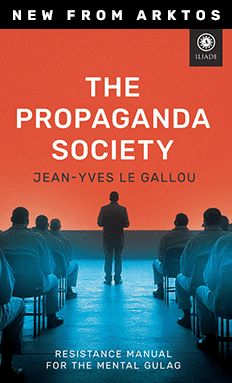Can Your Genes Make You Murder?
Barbara Bradley Hagerty, National Public Radio, July 1, 2010
When the police arrived at Bradley Waldroup’s trailer home in the mountains of Tennessee, they found a war zone. There was blood on the walls, blood on the carpet, blood on the truck outside, even blood on the Bible that Waldroup had been reading before all hell broke loose.
Assistant District Attorney Drew Robinson says that on Oct. 16, 2006, Waldroup was waiting for his estranged wife to arrive with their four kids for the weekend. He had been drinking, and when his wife said she was leaving with her friend, Leslie Bradshaw, they began to fight. Soon, Waldroup had shot Bradshaw eight times and sliced her head open with a sharp object. When Waldroup was finished with her, he chased after his wife, Penny, with a machete, chopping off her finger and cutting her over and over.
{snip}
Prosecutors charged Waldroup with the felony murder of Bradshaw, which carries the death penalty, and attempted first-degree murder of his wife. It seemed clear to them that Waldroup’s actions were intentional and premeditated.
{snip}
It was a pretty straightforward case. Even Waldroup said so during his trial last year. He said on the murderous night, he just “snapped,” and he admitted that he killed Leslie Bradshaw and attacked his wife. “I’m not proud of none of it,” Waldroup said.
{snip}
A Dangerous Mix
Richardson says he realized that the testimony at trial would be “very graphic.” The defense team, he says, did not try to dismantle the graphic evidence but rather sought to “give a broader and fuller picture of what that was.”
How to do that? The answer, it turned out, lay in Bradley Waldroup’s genes.
Immediately, Richardson went to forensic psychiatrist William Bernet of Vanderbilt University and asked him to give Waldroup a psychiatric evaluation. Bernet also took a blood sample and brought it to Vanderbilt’s Molecular Genetics Laboratory. Since 2004, Bernet and laboratory director Cindy Vnencak-Jones have been analyzing the DNA of people like Waldroup.
They’ve tested some 30 criminal defendants, most of whom were charged with murder. They were looking for a particular variant of the MAO-A gene–also known as the warrior gene because it has been associated with violence. Bernet says they found that Waldroup has the high-risk version of the gene.
{snip}
Over the fierce opposition of prosecutors, the judge allowed Bernet to testify in court that these two factors help explain why Waldroup snapped that murderous night.
“We didn’t say these things made him become violent, but they certainly constituted a risk factor or a vulnerability,” Bernet says.
Bernet cited scientific studies over the past decade that found that the combination of the high-risk gene and child abuse increases one’s chances of being convicted of a violent offense by more than 400 percent. He notes that other studies have not found a connection between the MAO-A gene and violence–but he told the jury that he felt the genes and childhood abuse were a dangerous cocktail.
{snip}
Genetics, or Smoke and Mirrors?
The genetic testing was only one piece of Waldroup’s defense. His attorneys also argued that Waldroup was depressed, suffered from “intermittent explosive disorder” and acted in the heat of passion. Still, defense co-attorney Shari Tayloe Young says the genetic evidence was critical.
{snip}
Prosecutor Drew Robinson thinks this genetic evidence is “smoke and mirrors,” aimed at confusing the jury.
“The more of this information that you put before a jury, the [greater the] chances of confusing them and drawing their attention away from the facts and onto some other aspects of the case,” Robinson says. “You always run that risk. And I just think that’s asking the jury to grasp ahold of a little bit too much.”
To rebut Bernet’s testimony, Robinson called in his own expert: psychiatrist Terry Holmes, the clinical director of Moccasin Bend Mental Health Institute in Chattanooga, Tenn. Holmes urged the jury to ignore it.
{snip}
Holmes says it’s way too early to use this research in a court of law. And he believes Bernet is spinning the data.
{snip}
Genetic Evidence a Factor
But Lard says the genetic evidence did figure into a major decision–whether to find Waldroup guilty of murder and impose the death penalty. The jurors concluded that his actions were not premeditated and agreed with the defense argument that Waldroup just exploded.
{snip}
Another juror, Debbie Beaty, says the science helped persuade her that Waldroup was not entirely in control of his actions.
{snip}
And even though prosecutors tried to play down the genetic evidence, Beaty felt it was a major factor.
“A diagnosis is a diagnosis, it’s there,” she says. “A bad gene is a bad gene.”
After 11 hours of deliberation, the jury convicted Waldroup of voluntary manslaughter–not murder–and attempted second-degree murder.
{snip}
Scientists and legal experts expect to see more cases like this as neuroscience makes inroads into the courtroom, and presents guilt and innocence–not in terms of black and white–but in shades of gray.















